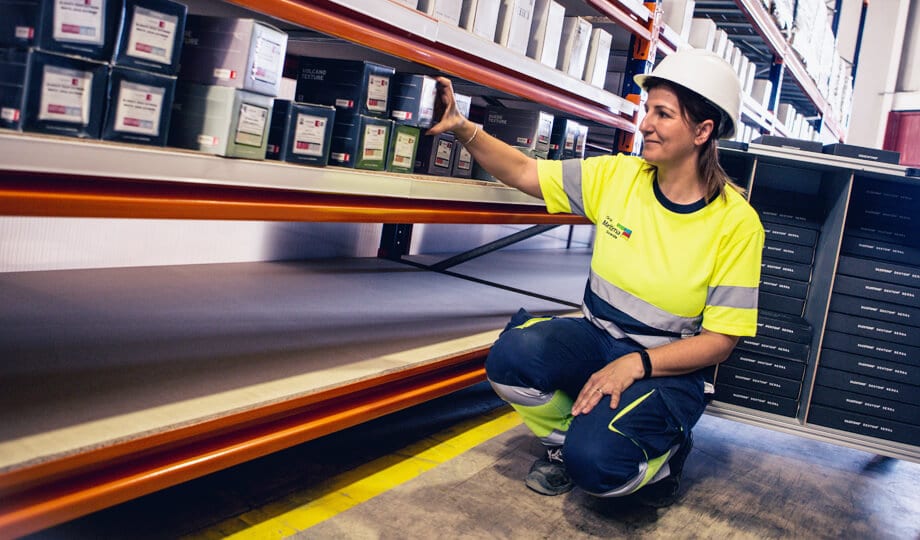Picking and packing services for growing companies
If your business is growing, you have probably considered diversifying or outsourcing certain services to focus on expanding your market.
Outsourcing tasks such as goods reception, order preparation and stock control to various warehouses will allow you to increase your company’s internal productivity, while also improving customer satisfaction.
Grupo Marítima Sureste offers you several logistic warehouses strategically located where we can receive, store and prepare orders to be sent to your customers.
We will manage your inventory by means of a computerised SCA system through which you will also be able to control the stock in each warehouse from anywhere.
Call us or fill in our form to get a quote for the service.
Definitions of picking and packing
The term packing encompasses all order preparation tasks: packing, wrapping or packaging of products to facilitate their dispatch and protect the goods against possible damage during the final stage of distribution.
This packaging refers to the final container in which the products travel. These containers are usually made of cardboard because of their low cost, considerable strength and light weight.
Inside, the products are usually protected by paper, bubble wrap or air bags for packaging.
In contrast, the term picking refers to all the actions that take place during order preparation, including the organisation of the order, the picking route through the warehouse and the removal of those products from stock.
Let’s take a closer look at what these two services commonly related to logistics for e-commerce consist of.
Table of contents
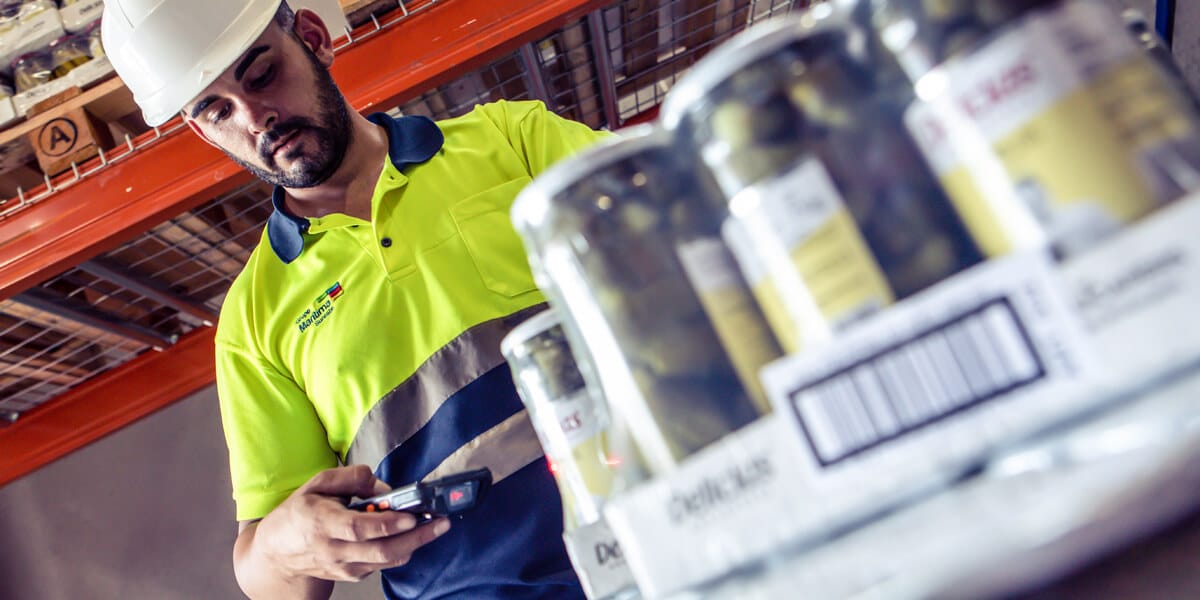
Picking: selecting and gathering products
This term picking is an anglicism that literally means “to pick something up and lift or move it”, as well as “to choose something from a series of alternatives”.
In logistics, picking refers to the method applied to an order to be prepared:
- Obtaining a list of the products in the order.
- Study of the route to optimise the picking of items.
- Collection of products from the different shelves or storage spaces following the marked route.
- Elimination of the units collected from the stock lists.
Subsequently, the packing and distribution processes continue.
Currently, in many B2C industries and in large marketplaces such as Amazon, picking has begun to be automated using robots to make better use of resources, although it is still carried out manually in many companies.
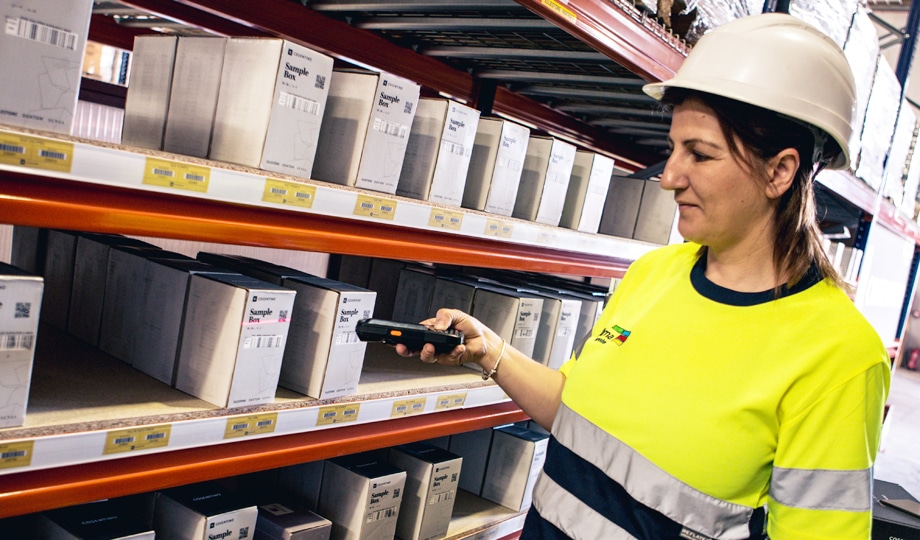
Labelling and stock control
In any goods warehouse it is of great importance to carry out a detailed management of the inventory: to know at all times the location of the products in the warehouse, the available stock, as well as registering all the entries and exits in the inventory.
Performing these processes manually is impractical, in addition to requiring many human resources and investing many working hours, as well as low productivity and probably many errors, reducing your profitability.
Effectively managing inventory in a warehouse requires some investment to reduce manual labour. By means of labelling, both of the shelves and the products, and stock control, you will have greater control of the stored goods, thus improving product management.
At Grupo Marítima Sureste we have an advanced warehouse management system that allows us to locate goods at different points and maintain centralised stock control, being able to dispatch orders from the location closest to the end customer, reducing delivery times and costs.
If you wish to improve your supply chain by outsourcing the warehousing and dispatch of orders, call us or request a quote for our services.
Packing: conditioning and wrapping of orders
Packing consists of preparing an order made up of one or more items, making it sturdy enough to prevent damage during final distribution.
By packing the items in the order, for example, in a cardboard box protected by air bags, we guarantee a safer final transport of your goods.
The following tasks are carried out during order packing:
Selection of wrapping and type of packaging
It is necessary to choose the right type of container for the number of items in the order, their volume and the special characteristics of the products.
Choosing a robust and light packaging will guarantee the integrity of the products inside during the final transport without increasing the distribution costs.
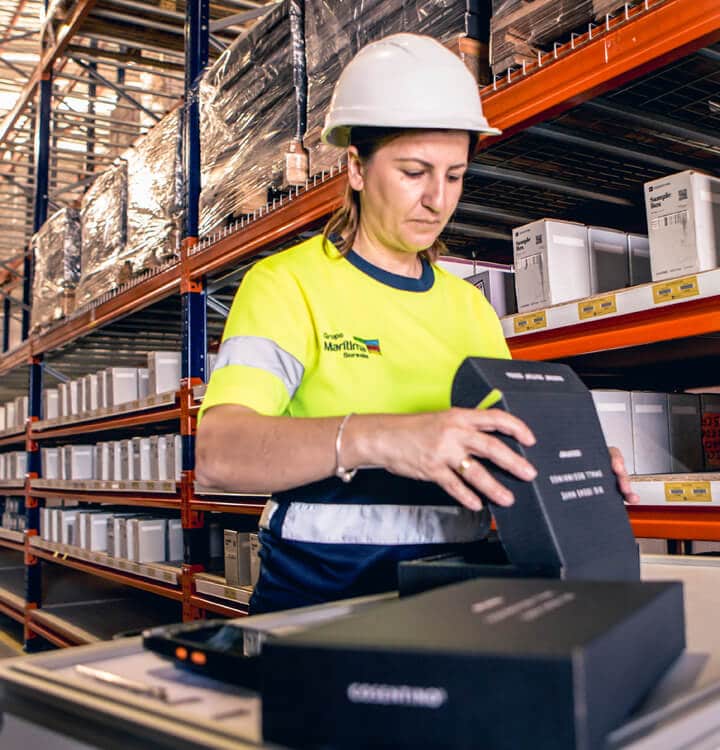
Choosing a padding and protection material
It is also essential to take into account the filling material, as it is an extra cost in the packaging but very necessary so that the articles do not move inside, causing possible breakages to the articles.
Among the different possibilities of packaging fillers we find:
- Bubble wrap. This packaging system is the oldest and has been used for decades. It is currently outdated due to its lack of protection compared to the volume of plastic required.
- Polyethylene foam sheets. This foam is supplied in sheets of 0.8 to 2.5 mm and is particularly useful for protecting goods from scratches and surface damage.
- Protective profiles and corner protectors. These protection systems are mainly used to protect the sides and edges of surfaces such as wood, glass or aluminium during transport.
- Instant foam packaging. By combining two components, this foam expands during packing, adapting to the shape of the items inside and preventing damage to the most delicate materials.
- Filling system with recycled kraft paper. For this system, there are machines to crumple paper and create bags to protect the items inside. Well known brands of paper folding machines are PackTiger and Fasfil.
- Air-filled bag system. This system offers a similar solution to bubble wrap but with a much lower waste of plastic, making it a more efficient and cleaner system. These bags come in un-inflated rolls, so they require a machine to inflate them during packing.
- Inflatable raffia bags. These large bags range in size from 60×90 cm to 1.2 x 1.8 metres and are designed to protect cargo inside large containers, such as sea containers.
- Polyethylene or “peanut” filling. This last filling system for cardboard boxes comes in bulk “peanut” bags and is low cost. It is easily adapted to any type of article and protects it during final distribution. The problem with this system is that it requires a high amount of non-recyclable plastic, making it the most damaging to the environment in the long run.
Items checking
Antes de cerrar el embalaje se vuelve a comprobar el listado del pedido y los Before closing the packaging, the order list and the selected items are checked again. This method reduces the number of picking errors almost entirely and corrects them before it is too late without affecting delivery time.
Labelling for distribution
A bar-coded sticker is affixed to the outside of the packaging so that parcel companies can identify the box with the order.
This sticker contains the shipping address, the tracking code, the order reference number and other useful information for the transport company. This information, in addition to being written, can be obtained by scanning the barcode.
Other value-added services
In addition to Picking and Packing services, at Grupo Marítima Sureste’s logistics facilities we offer the following services:
Palletising
This consists of placing the goods on a surface (made of wood, plastic or metal) called a pallet or pallet to facilitate their transfer and handling by forklift and convert the goods into a single storage unit.
This work is generally carried out to reduce the effort required for transport, handling and storage, thus reducing logistics costs.
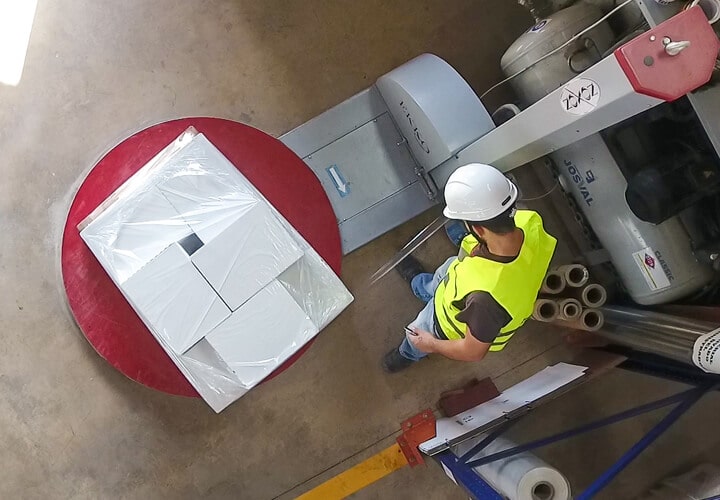
Shrink wrapping
This method of protecting goods also serves to consolidate the goods and prevent them from falling during transport.
By shrink wrapping a pallet, goods are also secured and protected to prevent damage to the packaging during handling and transportation.
The act of shrink wrapping involves wrapping the items on a pallet with transparent film, protecting the boxes from external agents, consolidating the goods into a single unit and increasing their strength.
Strapping
By means of strapping, we ensure that your goods arrive at their destination undamaged by attaching them with a continuous strap to the pallet on which they are placed.
With this simple method of securing the packaging and the goods, the product is efficiently secured, thus avoiding possible breakages due to displacements and unwanted movements during distribution.
If you wish to improve your supply chain by outsourcing warehousing, order dispatch, picking and packing, call us or request a quote for our services.
How to improve the efficiency of picking and packing?
To improve customer satisfaction while reducing picking times and optimising costs, it is essential to improve the efficiency of your logistics processes.
By outsourcing your logistics warehouse services to an external company, you will reduce the need to invest in improvements and new picking and packing methods, while at the same time improving your customers’ satisfaction and appreciation of your company.
However, if you decide not to delegate this arduous task of the distribution chain of your products, from Grupo Marítima Sureste we would like to make the following recommendations that will help you to improve the efficiency of your processes:
Reduce the number of movements
The lower the number of manipulations and movements of the goods within the warehouse, the more efficient the process will be. This point is key.
You will reduce costs if you design the correct routes for storing and picking the goods. When a load is received, it should be unloaded directly to its final storage location to avoid second movements.
The same applies during the picking phase. If the same point is passed twice during a picking phase, the picking route through the warehouse has not been defined efficiently.
Evaluate the efficiency of the methods used
Using warehouse management software simplifies the task of collecting data and then displaying it as key performance indicators, which are essential for evaluating the efficiency of warehouse operations.
The optimisation of picking and packing lies in separating each of these operations into sub-processes and calculating the standardised times required for each process, always trying to find ways to improve them.
With each implementation, the processes will be simplified and the productivity of the operators will be improved.
Improve the packing process
To optimise packing in your logistics operations, you cannot ignore any point in the order picking process.
To facilitate the packing of goods and reduce time, one of the most time-consuming ideas at the moment is the implementation of a paper crumpling or air-bag blowing machine next to the packing area.
In this way the operators do not have to move to look for the filling material, thus completing the task more quickly.
Having automatic pallet stretch wrappers, whether they have a turntable or rotating arm, eliminates the manual work of the operators, as the pallets are sealed autonomously.
On the other hand, having self-assembly boxes for packing orders reduces the time operators need to prepare an order, the number of steps required in the packing process and warehouse space by not needing to store already assembled boxes.
To improve your logistics and distribution processes, it is necessary to analyse each of the subtasks separately and identify the friction points that are affecting the productivity of the installation.
Picking and packing service for producers
Grupo Marítima Sureste, an integral logistics operator, offers your company picking and packing services.
Request a quote by filling in our quotation form or by calling us.
